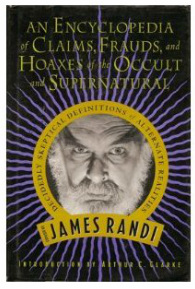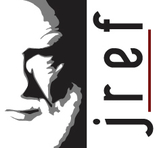|
V
Index | A | B | C | D | E | F | G | H | I | J | K | L |M | N | O | P | Q | R | S | T | U | V | W | X Y Z
Vampire
Known in Poland as an upir and in Greece as a brucolaca. In Slavic countries, it has been believed that a child born with a tooth already developed will become a vampire. Traditionally, the vampire is an “undead” person, often a suicide, who survives ordinary death by feeding on human blood, that of beautiful young maidens being much preferred. The blood is ingested through a bite wound on the victim's neck. It is said that some new vampires are the result of infection brought about from such a bite. The person thus affected must sleep by day in a coffin in contact with earth from his or her mother country in order to sustain the pseudo-life state. Sunlight is invariably fatal to vampires. Only that, a stake through the heart, a silver bullet in the heart, or the destruction or sealing up of the resting place can finally kill a vampire. They do not cast shadows, nor do they have reflections in a mirror. In 1730, there was a widespread panic in Hungary, where the legend was very strong. Adolescent girls reported nightly visitations from these creatures, much to the concern of the church. Bram Stoker's novel Dracula (1897) benefited from the fact that the vampire bat (Desmodus rotundus) had been discovered and studied in South America and seemed to provide an animal counterpart to the legend. In fact, the bat took its name from the mythical monster. Vibration An object or substance which oscillates from a neutral position (node) to positions (crests) on either side of the node is said to vibrate. An example would be the movement of the tines of a tuning fork, of a violin string, or of a pendulum (all “transverse” vibrations), or the compression effect on air or another medium when it vibrates with sound waves, an example of a longitudinal wave. The general condition of such oscillation, or a single cycle, is known as a vibration. Occultists have used the word vibration freely but without much notion of its meaning or respect for its true nature. It is a highly popular catchall description for imaginary forces, powers, or influences. Von Däniken, Erich (1935- ) Former Swiss bank employee and author of Chariots of the Gods?, Gold of the Gods, and others, books in which he attempted to establish that UFOs were spacecraft described in ancient writings and mythology. Over thirty-six million copies of his books have been sold, and they are still on bookstands. Erich Von Däniken, who invents material via what he termed Von Däniken's work does not survive even cursory examination. His calculations are wrong, his facts are misquoted or invented, and he has admitted, during a 1978 PBS Nova television program, that some of his claims, conversations, and research did not take place at all; he simply invented material via what he termed “writer's license.” Nonetheless, his books continue to sell by the millions all over the world, in several different languages. Perhaps the greatest weakness of Von Däniken's arguments is that though he cites the varied marvelous accomplishments of brown-, yellow-, or black-skinned races, he expresses his doubt that they could have constructed these wonders (the Egyptian pyramids, Easter Island statues, Nazca [Peru] lines, for example) without extraterrestrial help. He never mentions Stonehenge, Chartres Cathedral, the Parthenon, or any other wonders created by white-skinned races. Voodoo A religion of the West Indies, and specifically Haiti, originating with the slaves imported from Africa, who combined their gods with the Christian religious figures and through Macumba, Obeah (Jamaica), and other variations of this process created a great number of specific religions now popular in the Caribbean. Voodoo itself is most well-known for its use of the wax doll to effect changes on a subject. A doll, preferably made using the hair, nail parings, and/or clothing of the intended subject, and baptized in that name, is subjected to various procedures such as pin-pricking, melting, or being submerged in water. The subject is said to undergo the actual experiences to which the doll has been exposed. Though there is no evidence that such a system works, it has been postulated by modern authorities that perhaps a process of suggestion is involved, if the subject is informed of what has been intended and believes that it can work. See also sympathetic magic. Voodoo doll See voodoo and sympathetic magic. Vril An imaginary “occult essence,” the invention of mystic/novelist Bulwer-Lytton (1831-1891), who headed up a magic center in London and was a colleague of Éliphas Lévi. |
|
The James Randi Educational Foundation
E-mail | [email protected] |
JREF Privacy Policy | Copyright © 2015 James Randi Educational Foundation. All Rights Reserved.



